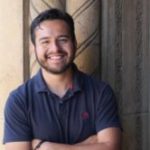 |
September 7, 2017Dr. Gustavo A. Ramírez, University of Rhode IslandMicrobial Neter-Khertet: Life and death post-entombment |
Abstract
Deep ocean sediment is a diffusion-limited environment where microbial inhabitants persist despite extreme temporal, physical and nutritional isolation from the ocean above. Burial time increases with sediment depth and, unsurprisingly, community richness, diversity, cell abundance and metabolic activity drop significantly with sediment age, implying both a steep selection curve and concomitant mass death. The extent to which benthic necromass (fragments of cadaverous cells), specifically extracellular DNA, a molecular fossil, may affect environmental sequencing surveys is a critical question that has received little attention. Reasons for this neglect are i) DNA is generally believed to have a short molecular half-life and ii) extracellular DNA represents dissolved C, N and P which should be readily metabolized by active microbes. The scarcity of methods for assessing microbial viability in complex environmental samples further confounds this issue. I interrogated Arctic and Pacific sediments for the presence of detrital DNA using Propidium Monoazide, a photo-active DNA intercalating dye that cannot penetrate intact prokaryotic membranes. This approach employs membrane integrity, a prerequisite for chemiosmotic potential and ATP production, as a viability metric. I detected statistically significant extracellular 16S rRNA gene loads in shallow sediment horizons, but not deep horizons. Measures of Alpha- and Beta-diversity for intra-and total-16rRNA gene pools are somewhat variable. Diversity trends are generally similar for both DNA pools, but noisier at shallow depths.
Speaker Biography
Dr. Gus Ramírez received his undergraduate degrees in Biology, Physical Science and Mathematics (A.S.), and Microbiology (B.S.) from Citrus College and the California State Polytechnic University, Pomona, respectively. Prior to graduate school, he worked in the food microbiology industry and interned at the California Institute of Technology/Jet Propulsion Laboratory’s Planetary Protection group. He received his Ph.D. in Marine Biology and Biological Oceanography in the laboratories of Dr. Katrina Edwards and Dr. Sergio Sañudo-Wilhelmy at the University of Southern California investigating crustal subseafloor microbial ecology and the geomicrobiology of microbial-induced corrosion. He is now a C-DEBI postdoctoral fellow at the University of Rhode Island studying the influence of extracellular DNA on ecological surveys of microbial communities living under extreme energy limitation in deep ocean sediments.
Recording

